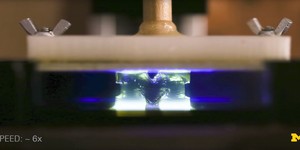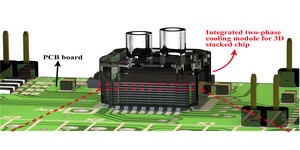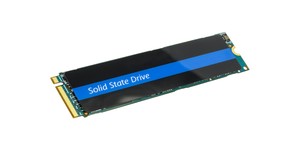Researchers print passive plastic Wi-Fi-connected sensors
December 6, 2017 | 10:23
Companies: #researchers #university-of-washington

Researchers at the University of Washington have published a paper on 3D-printed wireless sensors capable of operating not only without batteries but without electronics of any kind, yet still capable of providing useful data to nearby Wi-Fi-based receivers.
Described as 'printed Wi-Fi', the work by students Vikram Iyer and Justin Chan uses off-the-shelf 3D printers and common plastic to create novel sensors including a wind-speed sensor, flow meter, and scale, as well as functional buttons, knobs, and sliders. When activated, these sensors - as you might expect - report back to a receiving radio, but where things get clever is that the sensors themselves are made of nothing but doped plastic without a single electronic component in sight.
The sensors work through a radio effect known as 'backscatter', in which a signal can be monitored for how it is affected by otherwise passive devices as a means of passing data. It's similar in effect to how radio-frequency identification (RFID) and near-field communications (NFC) tags operate, as well as the so-called passive Wi-Fi technology demonstrated by the same University back in February last year. Where RFID and NFC tags contain active electronics which run on power harvested from the transmitter, however, Iyer and Chan's sensors lack any such complexities.
'Our key contribution is to apply Wi-Fi backscatter to 3D geometry and create easy to print wireless devices using commodity 3D printers,' the pair explain. 'To achieve this, we create non-electronic and printable analogues for each of these electronic components using plastic filaments and integrate them into a single computational design.'
While the sensors are printed using off-the-shelf 3D printers, the secret sauce lies in the material used: plastic filament doped with conductive material such as graphene or copper. By analysing their radiofrequency responses and integrating that knowledge into the design, the pair have been able to develop passive plastic devices which can nevertheless affect a Wi-Fi signal strongly enough to be detected - reporting anything from the gross press of a button to the subtle movement of a weighing scale.
The same technology has also been used to create what the pair called 'Printed MagLink' devices, with static information embedded within - from the name of its creator to its version number - in a move which may rival RFID tagging for inventory monitoring and control tasks. The magnentically-encoded information is strong enough, the pair claim, to be read using the magnetometer in any commercial smartphone - more typically used as a magnetic compass for navigation and orientation tasks.
Full details of the technology, its applications, and the successful experiments carried out can be found in the paper 3D Printing Wireless Connected Objects (PDF warning.)

MSI MPG Velox 100R Chassis Review
October 14 2021 | 15:04








Want to comment? Please log in.